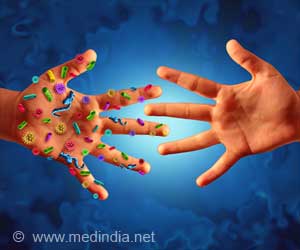What's the significance of Hand Hygiene Day? Discover why clean hands are crucial for preventing infections and improving public health.
- Hand hygiene is vital for preventing infections and saving lives
- Proper handwashing with soap and water for at least 20 seconds is the gold standard
- Alcohol-based hand sanitizers with at least 60% alcohol are effective alternatives when soap and water aren’t available
World Hand Hygiene Day
Go to source). This global initiative aims to raise awareness about the significance of hand hygiene practices in preventing the spread of infections, saving lives, and improving overall public health.
Proper hand hygiene can reduce diarrheal diseases by up to 50% and respiratory infections by up to 25%. Keep those hands clean! #handhygieneday #cleanhandssavelives #medindia’
Origins of Hand Hygiene Day
Hand Hygiene Day was established by the World Health Organization (WHO) to coincide with the birthday of Dr. Ignaz Semmelweis, a Hungarian physician known as the "savior of mothers." In the mid-19th century, Dr. Semmelweis made a groundbreaking discovery while working in a maternity ward: he found that handwashing with an antiseptic solution significantly reduced the incidence of puerperal fever, a deadly infection affecting women after childbirth. Despite facing skepticism and resistance from his peers initially, Dr. Semmelweis’s findings revolutionized medical practices and laid the foundation for modern hand hygiene protocols.Significance of Hand Hygiene
Hand hygiene plays a pivotal role in preventing the transmission of infectious diseases, including common colds, influenza, gastrointestinal illnesses, and more serious infections like COVID-19. Our hands are a primary mode of contact with the external environment, making them potential carriers of harmful pathogens. Proper hand hygiene not only protects individuals from getting sick but also helps break the chain of infection, particularly in healthcare settings where patients are vulnerable to hospital-acquired infections.Best Practices for Hand Hygiene
Effective hand hygiene involves more than just a quick rinse under running water. The WHO advocates for a multimodal approach to hand hygiene, encompassing several key practices:Handwashing with Soap and Water:
This remains the gold standard for hand hygiene. When hands are visibly soiled or contaminated with dirt, grease, or bodily fluids, thorough handwashing with soap and water is essential. The process should involve wetting hands, applying soap, lathering for at least 20 seconds, scrubbing all surfaces (including the backs of hands, between fingers, and under nails), rinsing thoroughly, and drying with a clean towel or air dryer.Alcohol-Based Hand Rubs:
In situations where access to soap and water is limited, alcohol-based hand sanitizers offer a convenient and effective alternative. These sanitizers should contain at least 60% alcohol to ensure efficacy. Apply a palmful of sanitizer and rub hands together, covering all surfaces until dry.Nail and Hand Care:
Keeping nails trimmed and clean is an integral part of hand hygiene, as dirt and pathogens can accumulate under long nails. Encourage regular nail trimming and discourage habits like biting nails, which can introduce harmful bacteria into the mouth and body.Avoiding Hand-to-Face Contact:
Minimizing hand-to-face contact, particularly touching the eyes, nose, and mouth, reduces the risk of transferring pathogens from contaminated surfaces to mucous membranes. Encourage awareness of this habit, especially among children, who may be more prone to touching their faces.Promoting Hand Hygiene Beyond Healthcare Settings
While hand hygiene is paramount in healthcare facilities, its importance extends beyond hospitals and clinics. Schools, workplaces, restaurants, and households are all environments where proper hand hygiene practices can make a significant difference in preventing the spread of infectious diseases. Educational campaigns, signage, and access to handwashing facilities or sanitizers can encourage compliance with hand hygiene guidelines in various settings.Despite the widespread recognition of hand hygiene’s importance, challenges persist in ensuring universal compliance. Factors such as inadequate access to clean water and soap, lack of awareness, cultural beliefs, and understaffing in healthcare facilities can hinder effective hand hygiene practices. Addressing these challenges requires a multifaceted approach involving infrastructure improvements, education, training, and policy support at local, national, and global levels.
Empowering Through Clean Hands
As we commemorate Hand Hygiene Day, let us reaffirm our commitment to promoting hand hygiene as a cornerstone of public health. By fostering a culture of cleanliness, raising awareness, and implementing evidence-based strategies, we can empower individuals, communities, and healthcare systems to protect against infectious diseases and safeguard the well-being of present and future generations. Clean hands save lives – a simple yet powerful mantra that underscores the profound impact of hand hygiene on global health outcomes.Reference:
- World Hand Hygiene Day - (https://www.who.int/campaigns/world-hand-hygiene-day)
Source-Medindia












